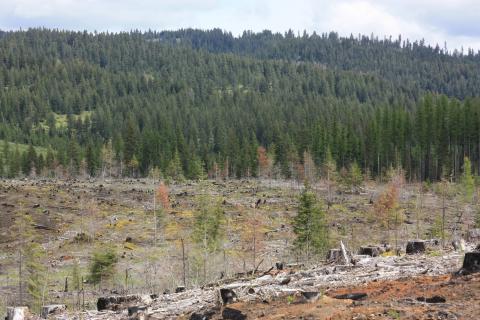Consequences of deforestation on aboveground biodiversity
Thomas Crowther
Yale Climate and Energy Institute
The consequences of deforestation for aboveground biodiversity have been a major scientific and political concern for decades. In contrast, despite being a dominant component of biodiversity that is essential to the functioning of natural ecosystems, the responses of belowground biodiversity to land-use change have only recently begun to receive attention. The advent of next generation sequencing has recently enabled us to comprehend, for the first time, the full extent of microbial biodiversity responses to land-use change.
Two studies conducted in the Amazonian rainforest suggest that, in contrast to plants and animals, bacterial diversity increases following forest removal. This increase is coupled with reduced bacterial biomass, effects which are driven by reductions in soil organic matter concentrations. However, on a continent-scale, effects of deforestation on organic matter concentrations are highly idiosyncratic, with negligible effects in some regions. No study has explored the consequences of this idiosyncrasy by investigating the effects of deforestation across multiple sites/biomes. Thus, we are limited in our capacity to identify global trends or unifying mechanisms governing microbial susceptibility to land-use change. Furthermore, although fungi are the dominant decomposing agents in forest ecosystems, they have been completely ignored in continent-scale studies.
We take advantage of a unique set of 11 well-maintained, long-term experimental research sites to explore the effects of deforestation on fungi, bacteria/archaea and their functional potential, across the Northern United States. Using Illumina sequencing we explore community-scale microbial responses across tropical, temperate and boreal biomes and identify the unifying principles governing the vulnerability of soil biodiversity to forest removal.
We reveal consistent effects of deforestation at the continent-scale, but the magnitude of the community response is highly variable, with strong effects of forest removal in some sites and negligible effects in others.
The magnitude of the effect was highly predictable, and governed almost exclusively by soil texture, effects of which are mediated by the increased capacity of fine-textured soil to retain soil organic matter following forest conversion. Mean annual temperature also explained the susceptibility of one metric of fungal community vulnerability, an effect driven by the specialized nature of mycorrhizal associations with forest trees at higher latitudes.
The strength of these relationships enabled us to predict (map) the vulnerability of microbial (fungal and bacterial) biodiversity to change in vegetation cover at the continent scale. Our model was validated using previously published data from single-site studies in Brazil. The microbial community changes were associated with distinct changes in heterotrophic soil respiration, providing a direct consequence of deforestation for terrestrial carbon exchange.
The highly predictable nature of microbial susceptibility, at the continent-scale, can serve as a guideline for future intensive forest management, and opens the door for a new generation of ecosystem models that incorporate entire microbial communities to anticipate the consequences of land-use conversion on biodiversity and carbon storage of forest ecosystems worldwide.
The study: Predicting the responsiveness of soil biodiversity to deforestation: a cross-biome study

